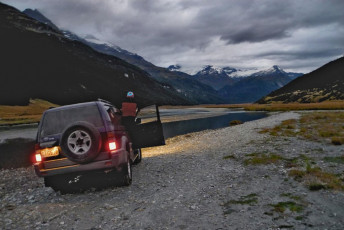
At dawn we four wheel drove our way up the Rees River valley to the base of the climb. This starts in beech forest at 700 metres.
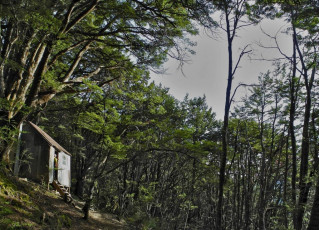
Just below the tree line at around 1,000 metres, we poked our noses into the rustic old Earnslaw Hut.
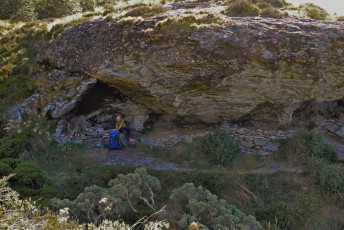
Just beyond the tree line lie two rock bivvies at the base of Kea Basin. Particularly the larger of the two exudes character, with its old makeshift hearth, sooty walls and straw covered floor.

Beyond the bivvies is a band of tussock hills that eventually gives way to scree.
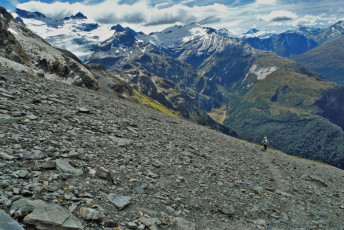
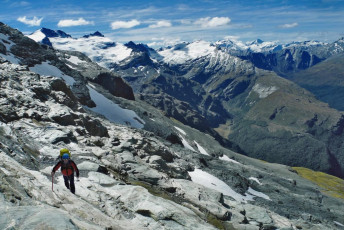
The scree then gives way to bands of rock, waterfalls and snow fields.
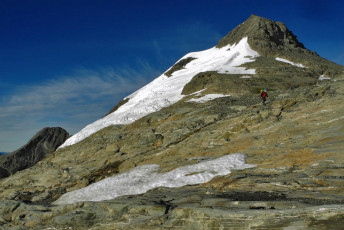
Earnslaw's east peak viewed from below Birley glacier.
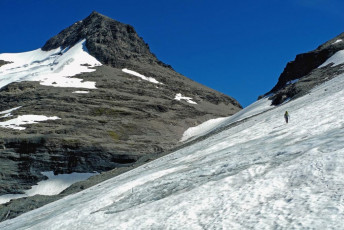
Above that is the bare ice of the glacier leading to Wright Col (2,264m).
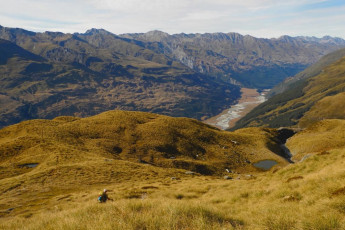
It wasn’t only the variety of terrain beneath our feet that made the approach so memorable. As we climbed, the views back down the Rees and of the mountains beyond became ever more expansive and impressive.
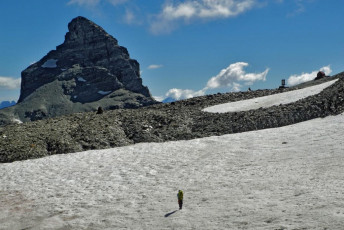
Approaching Esquilant Bivy (2,200m). Pluto peak (2,480m) at left.
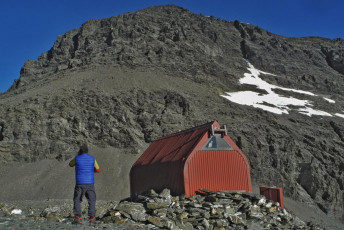
We reached Esquilant Bivy (2,150m) mid afternoon, leaving plenty of time to ponder the route up Earnslaw, which towered directly above us; and to just soak up the ambiance of this lovely location.
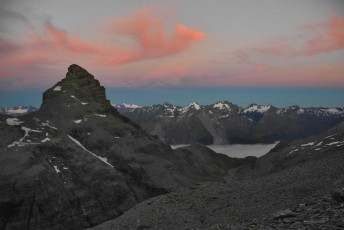

Sunrise view to Earnslaw West (left) and Pluto Peak.
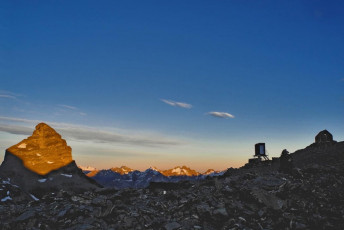
Pluto Peak, sunlit at dawn.
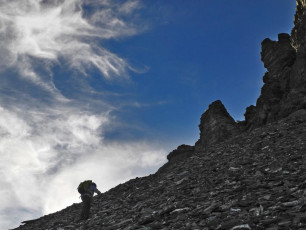
At dawn next morning we began our climb. Until the rays of the sun reached us it was cold, but settled.
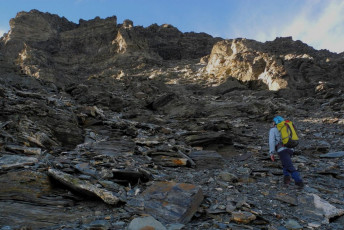
Like many routes on mountains, once actually on it, Earnslaw didn’t feel as steep as it looked beforehand. The main challenge on Earnslaw East in summer is route finding.
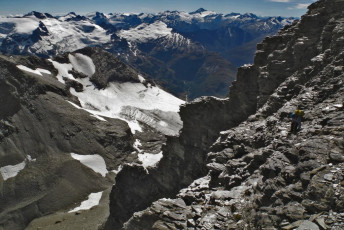
Finding the route through bluffs. Mount Aspiring is on the skyline right of centre.
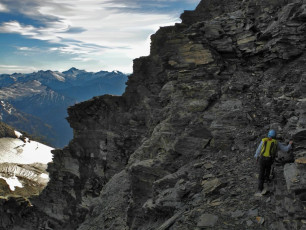
The mountain is a huge pile of crumbling rock with many cliffs and gullies. The rock cairns marking the best route up blend into all the other rock around, so it’s important to resist charging ahead and to take your time identifying the cairns as you go.
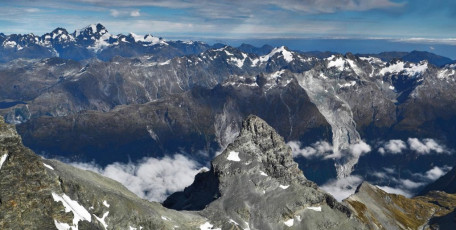
Two hours of this rewarded us with the summit. Pikirakatahi is guardian to more than pounamu. From its summit is a wonderful panorama encompassing peaks, ridges, glaciers, rivers and valleys in every direction, as far as the eye can see.
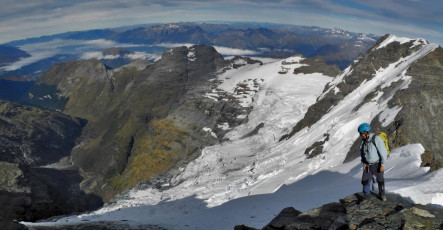
And directly along a dauntingly sheer and jagged ridge is the west peak. From the east summit it’s plain to see why the traverse between the two wasn’t made until 1932; and is still regarded as one of New Zealand’s classic climbs.

Also, just across Wright Col, but 260 metres lower down (diagonally right, above Steve's head), is the summit of Leary Peak (2,570m). The route from the Col to the top of Leary was plain to see and it seemed to beckon me to climb it. I still had a good part of the day left so decided it would be rude not to.
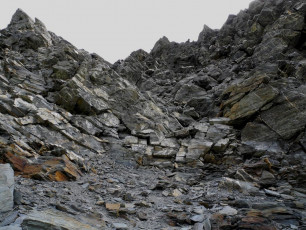
Back down at the Col Steve elected to be rude so, alone, I began my scramble up scree towards some small, crumbling cliffs. Expecting just a slog up scree I’d left my crampons, axe, harness and rope behind with Steve. As I climbed the cliff though, I started to wonder if that had been a mistake. Climbing the crumbling rock was okay but, knowing that descending can be more difficult than ascending a given route, I was feeling less and less keen to retrace my steps on this one. I consoled myself that I’d seen some other potential escape routes on the approach, so put the descent to the back of my mind.
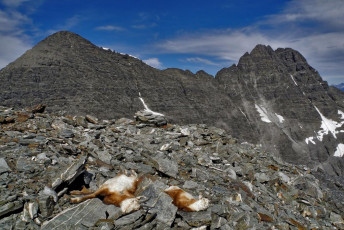
Once above the cliffy section it wasn’t long before I reached the top. For company I had two dead mountain goats, lying together almost peacefully. It was both off putting and mysterious being confronted with death on the summit. Why were they there? And what killed them?

Summit view south from O'Leary Peak (2,570m) to Eanslaw East (2,830m, left) and Earnslaw West (2,820m, right). The route up Earnslaw East is all left of the snow field between the East and West peaks. Mounts Madeline and Tutoko are on the right skyline.
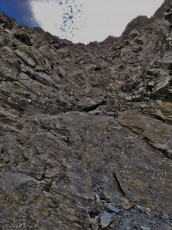
Back at the cliffs I avoided retracing my steps by down climbing a larger, but less un-nerving section. I was totally absorbed picking my way down unprotected; and exhilarated to put the danger behind me upon reaching the bottom. While sliding down the scree towards Esquilant Bivy my thoughts alternated between the prospect of a sit down after a good solid day’s climbing and the satisfaction of having reached two new highpoints. It had been another day in paradise.









